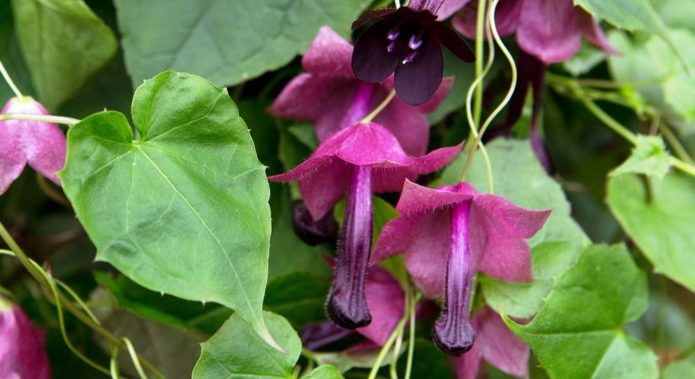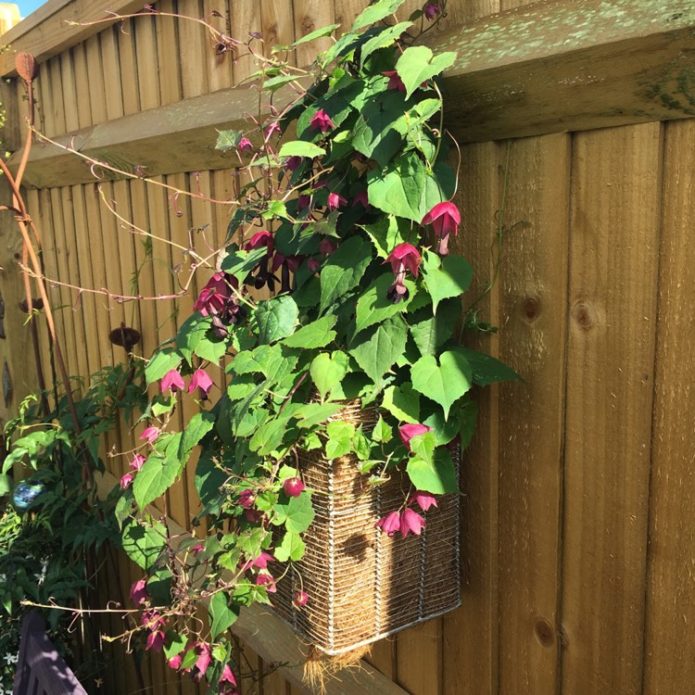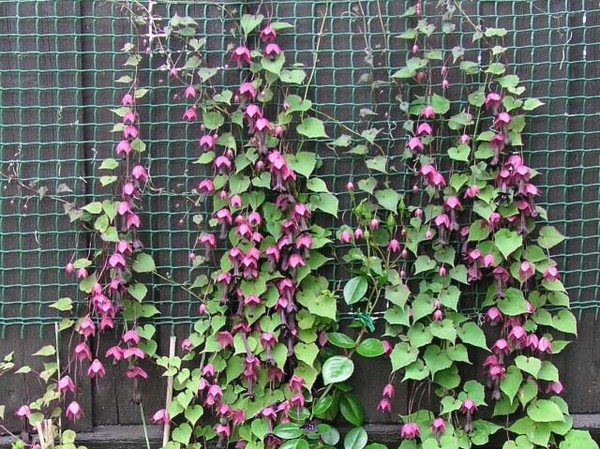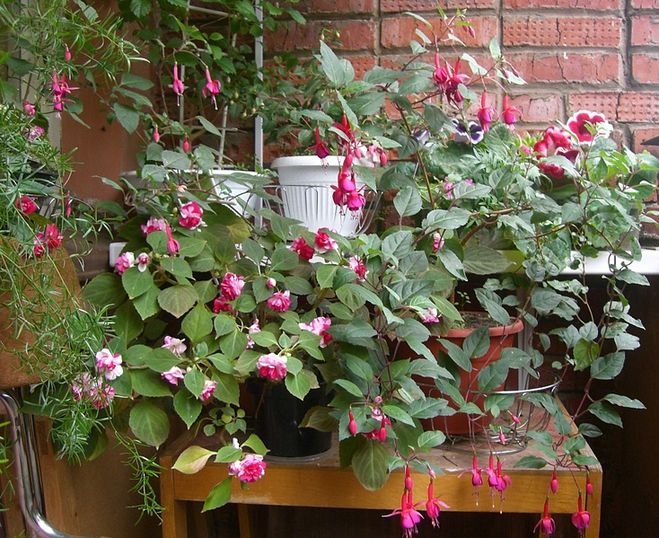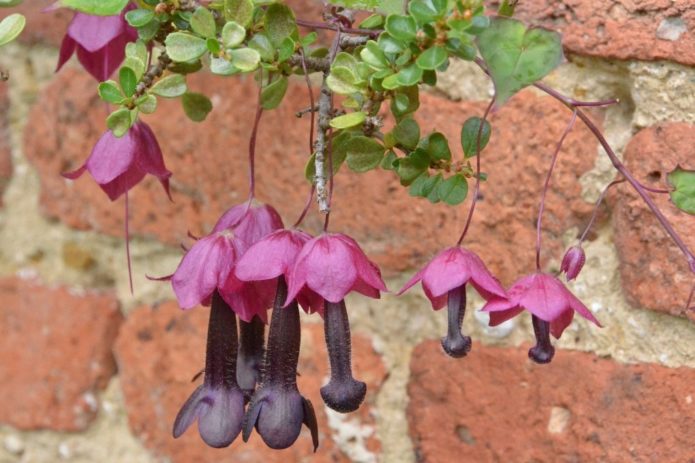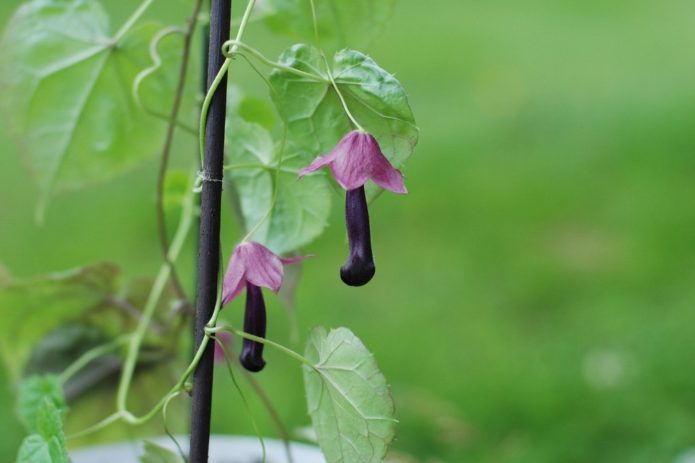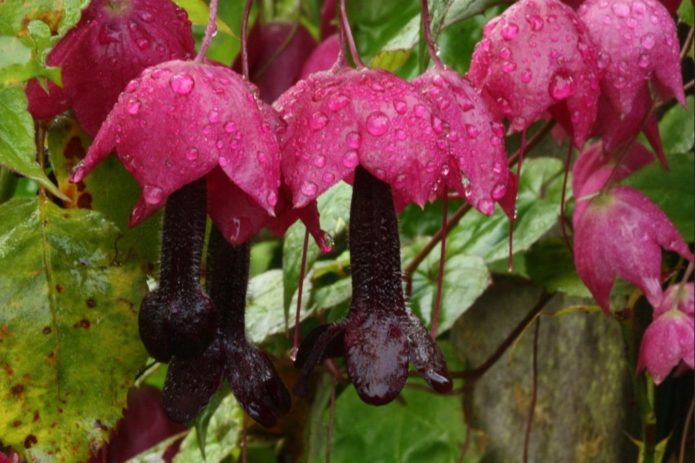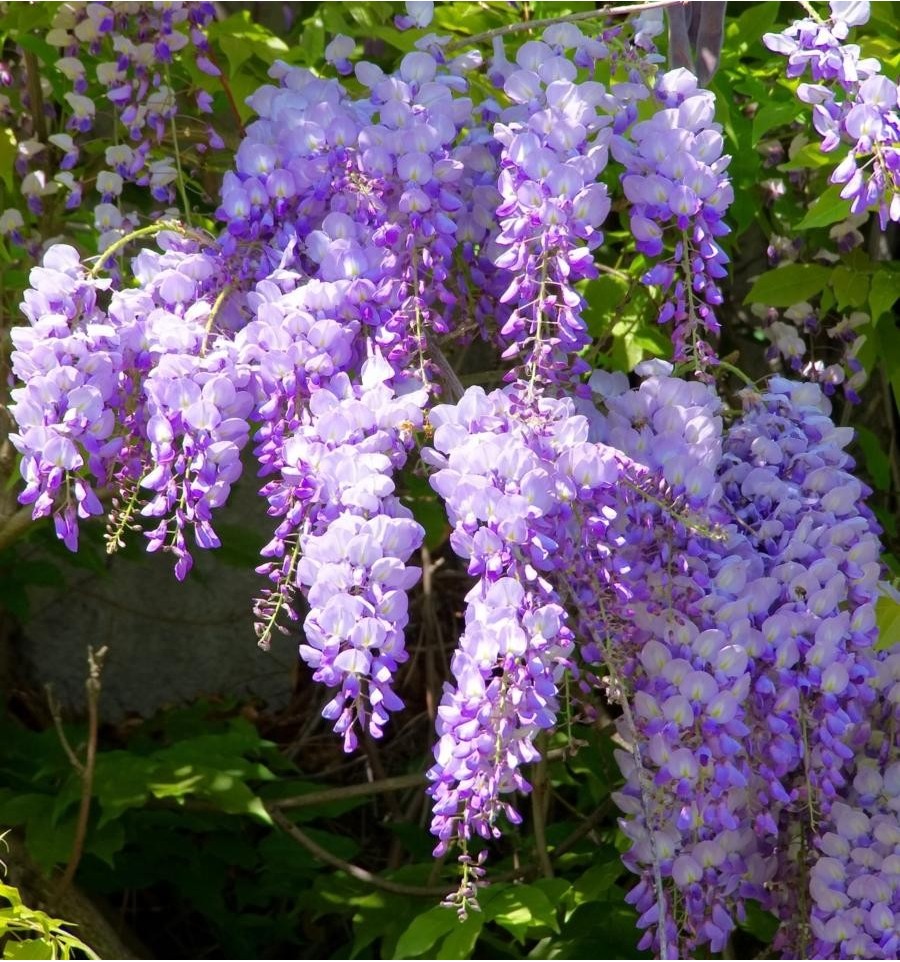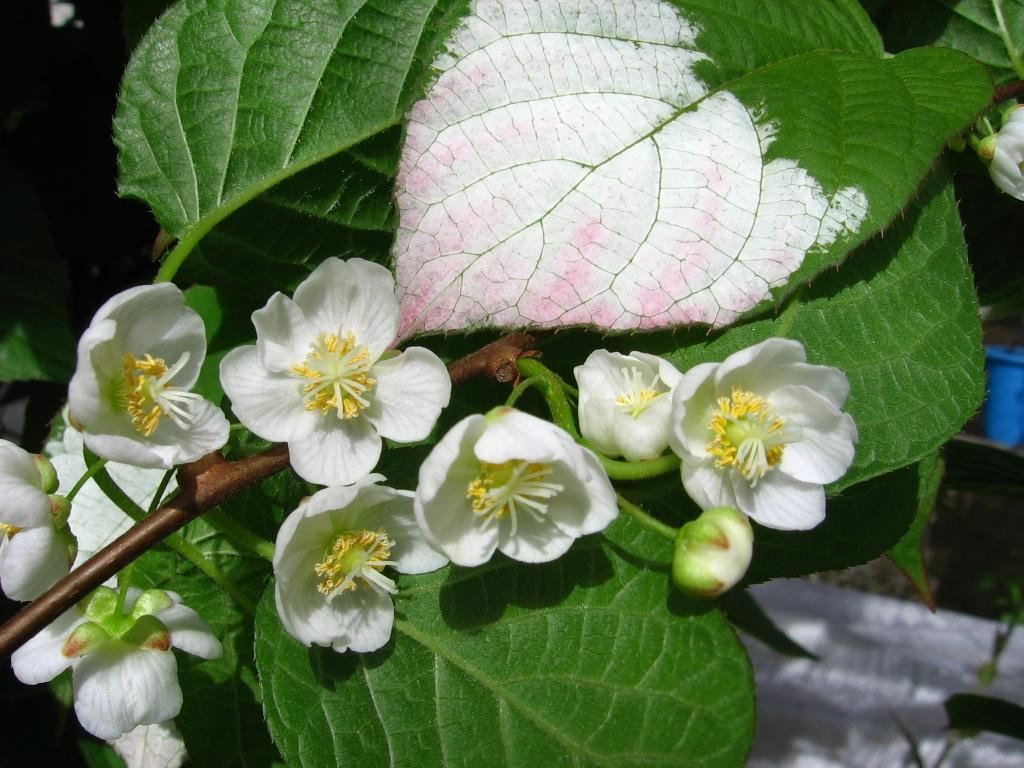Recently, household plots and even summer cottages are increasingly being used in Russia not only for household and gardening purposes, but also for landscape design. For these purposes, special crops are selected that have their own decorative characteristics. And each such plant has its own cultivation characteristics. Rhodochiton belongs to such living decorations of the local area.
Content
Photo of Rhodochiton and features of its cultivation
Under natural conditions, Rhodochiton grows in the countries of Central America, it is especially common in Mexico. Therefore, he does not tolerate the Russian winter and is considered an annual. For the winter, the vine must be brought into the room, otherwise the plant will die.
It is preferable to grow this ornamental culture in the garden in a tub or flowerpot in order to move the plant into heat without interference in winter. However, for some amateurs, a dirt landing is not a hindrance. Before the onset of frost, they carefully dig up the liana, cut it and move it, say, to the basement.
How is it used in landscape design
In landscape design, the plant is used very widely.
It can be planted on a hedge
wrap them around a gazebo,
decorate a balcony or loggia,
let it go by the walls of the house.
Important! A single plant as an ornamental in the garden does not look very attractive. However, several vines nearby (usually up to ten) can create a unique and memorable flavor.
The climate for the plant is suitable for the south, without frost. Then it is not necessary to bring it into the room during the winter months. But this liana tolerates the summer of a temperate climate quite well. And even relative spring and autumn cold snaps do not prevent its growth. And in the summer, bell flowers are also pleasing to the eye.
The soil for this crop must be prepared carefully, especially for the seedlings, as they are very tender. The best option is to prepare the substrate from four components:
- sand, preferably river;
- peat;
- deciduous humus;
- the actual garden land.
All components should be mixed in equal parts.
In terms of pH, the reaction should be slightly acidic or neutral. If cultivation takes place in a tub, the density of the soil does not need to be made excessive, the root system should develop freely.
Popular varieties with photos
In our country, only one variety of this vine is grown as a perennial landscape plant so far - the Purple Bell. True, manufacturers and sellers offer it under other names:
- Dark bloody liana;
- The rain is purple;
- Bloody Rhodes.
However, all of these options do not have distinctive qualities and are indicated only for commercial purposes to attract buyers.
Rhodochiton of this variety is a perennial vine, which belongs to the Norichnikov family. Can reach 4m in length. Shoots usually develop on specially installed supports or trees growing nearby. The leaves are oblong, green in color, but under the influence of sunlight they turn beautifully purple.Even more attractive are the inflorescences that form under each leaf and hang on the characteristic flexible stalk. The flower is a tube with a bell up to 2.5 cm long. Flowering lasts the entire summer period.
There are varieties of one-year-old rhodochiton lianas:
- Rhodes is ampelous - its bells are large, up to 10 cm.
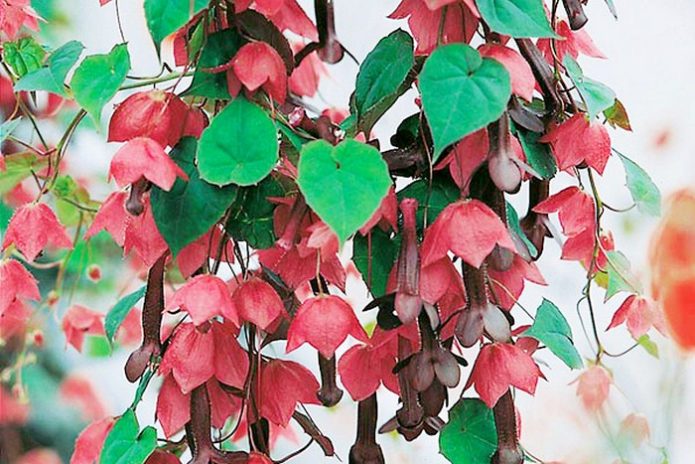
- Ruby bells, as a perennial, is used only indoors, but one season is grown in the garden.
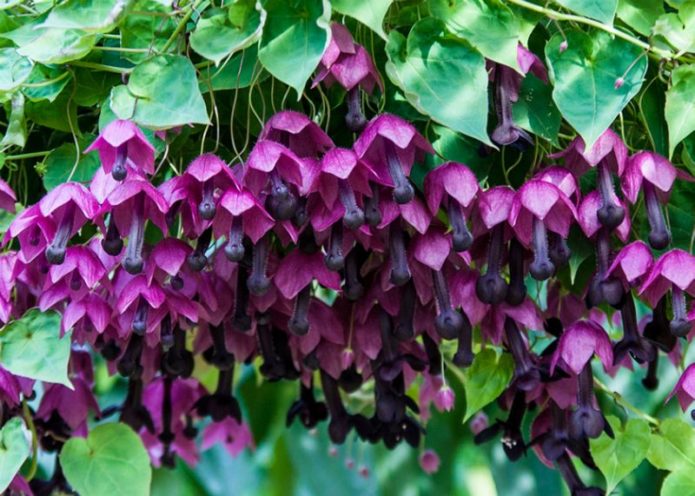
- Chinese lanterns - the plant is not very tall (up to 3 m), and its bells are no more than 5 cm long.
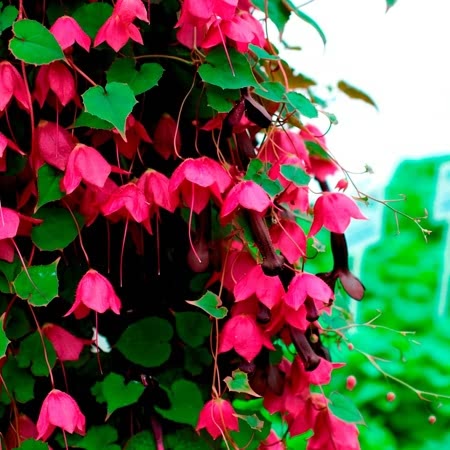
- Purple rain - corollas have red edges.
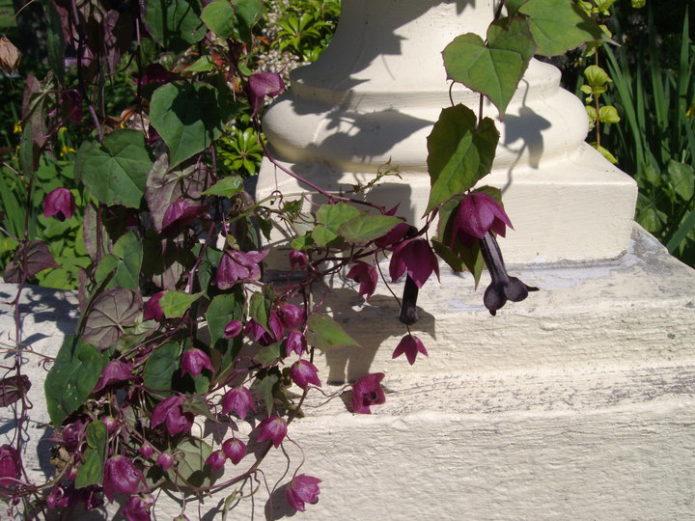
Growing Rhodochiton from seeds at home
Most often, this thermophilic culture is grown using seedlings.
Seeds are recommended to be sown at the end of February. In this case, a number of conditions must be observed:
- the soil in the boxes with seedlings should be approximately the same composition as in the tubs: sand, leaf humus and soil from the site should be equally present;
- before placing in boxes or peat pots, this mixture is recommended to be calcined in the oven for disinfection;
- it is recommended to lay a layer of sawdust or expanded clay on the bottom of the box as drainage;
- seeds can be pre-germinated by wrapping them in gauze;
- it is useful to disinfect them before planting by holding them for a while in a weak solution of potassium permanganate;
- after planting seeds, it is recommended to close the planting containers with foil or glass to create a greenhouse effect;
- after the emergence of shoots (this should happen already at the beginning of March), the film is removed;
- sprouts are dived with the appearance of 2-3 leaves (not cotyledonous);
- seedlings should be watered with warm water and not too abundantly, otherwise the sprouts may die.
Planting of seedlings in the place of permanent growth usually occurs in early June. At this time, nighttime temperatures should already rise to 18 ° C, and daytime temperatures above 22 ° C.
Important! It is not recommended to put rooted sprouts in boxes immediately in a strongly lit place, the tender first real leaves can get burns.
In general, when growing this decorative liana, the principle of gradualness is declared: gradually the seedlings are accustomed to light, watering, fresh air. It is necessary that before planting in open ground, the plant has already adapted to local climatic conditions.
Rhodochiton can be propagated by cuttings. Root them in plastic bags with nutritious soil mixture. This can be done in spring or autumn. Autumn cuttings are cut by about a third and brought indoors for the winter, like adult plants.
Garden flower care
During growth and flowering
This decorative liana does not differ in particular demands on care, but even here a number of requirements must be observed:
- it is advisable to plant a plant in the garden in a well-lit and ventilated place;
- the liana should be periodically sprayed with water - this will not only improve the well-being of the plant, but also scare away or wash away possible pests;
- watering, especially during flowering, should be frequent, only light drying of the topsoil is allowed;
- feeding is recommended to be done twice a month with liquid mullein or chicken dung;
- you can use nitrogen-containing fertilizers for flowers, sold in stores, but in limited quantities.
Pruning the stems for the formation of vines can be done either before flowering begins, or after it ends, so as not to harm the inflorescences.
Autumn care and preparation for winter
With the onset of autumn, the flowering of lianas stops, and they lose their decorative landscape appearance. Watering is also gradually reduced, but it cannot be completely stopped, even indoors in winter. If the nutrient substrate dries up, the rhizome will die.
In the case when in the garden the plants are placed in flowerpots and tubs, they are brought in the same form into the rooms for wintering.And if the seedlings were planted directly into the ground, only the rhizome with a small remainder of the stem is dug up and left to winter.
IMPORTANT! In most Russian regions, simply shelter for the winter with spruce branches or burlap does not save this decorative liana from frost. To make the plant truly perennial, it should be brought indoors until spring at the end of autumn.
The vine is covered only in the southern regions, where there are practically no freezing temperatures.
Growing difficulties and disease
As already mentioned, frequent watering and its absence are equally harmful to the plant. Excessive moisture can cause powdery mildew and root rot. To prevent the emergence and development of these misfortunes, the plant should be sprinkled with wood ash, and some of the ash should be mixed with soil.
Rhodochiton is often attacked by a spider mite - a very harmful arachnid, which colonizes plants and drinks juices from leaves. You can notice the defeat by the characteristic yellowness of the foliage with brown dots.
To remove the tick and its larvae, it is enough to rinse the vine leaves with warm soapy water.
How to care for a plant at home
This plant is also grown directly at home. It serves as a wonderful decoration for balconies, loggias, even furniture. Grows in pots, pots and other similar containers. The care requirements are the same as in the garden. For the winter, by cutting off part of the stem, the home liana can be removed from the windowsill and placed in a dark place until spring. The new stem will be tighter and taller. Or you may not need to remove it from the windowsill, the plant will overwinter.
Rhodochiton is an attractive plant for landscape design, and this blooming liana clearly ennobles the apartment. You just need to take care of her a little and try not to forget about planting with the onset of cold weather.
